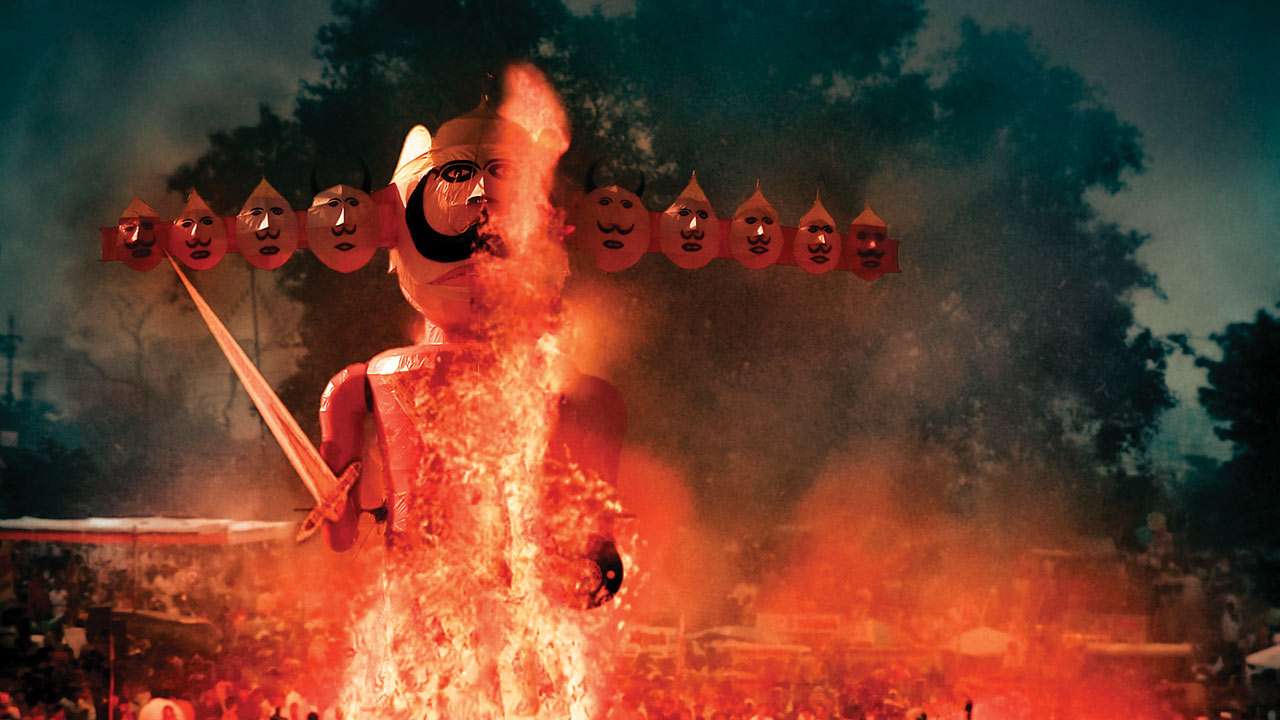Literal, symbolic and political – and much in between

Ravan , Istock
A recent book about Tamil personalities made me remember the enfant terrible of Tamil Nadu politics: EV Ramasamy Naicker, identified as “Periyar”, venerable elder.
Periyar believed that Dravidians, the original inhabitants of south India, had long been colonised by the Aryans. His Self Respect movement was launched against Aryan hegemony, perpetuated (according to him) by Tamil Brahmins. To oppose the icon of “Aryan Brahminical culture”, who killed Ravan, the “pure-blooded Dravidian” (!), Periyar conducted his famous procession of a Ram effigy garlanded with slippers.
Present day research dismisses the Aryan invasion theory. And Ravan is identified as the son of a Brahmin sage, belonging to a community Periyar sought to humble.
What interests me is the reaction to Periyar’s iconoclastic atheism. Outrage? Yes. But, on the whole, even opponents shrugged off such shenanigans and continued to respect Periyar’s commitment to social reform and gender equality. Statesman C Rajagopalachari, himself a Brahmin, who had made the Ramayan and the Mahabharat accessible to all in his contemporary Tamil writing, remained Periyar’s friend and confidante.
Do we have that level of acceptance today? Especially in matters of faith? Can we recognise opposing opinions as enjoying the right to coexist with our own beliefs? Parallel credos as having as much value as our own interpretations? Do we have room for pluralism? Can we respect those who think differently?
I look at my own experience. Some of my theatre work contemporise stories or motifs from Indian myths to mirror our times. “Sarpa Sutra” juxtaposes the majestic Sanskrit of ancient Vyasa and the sardonic English version of modern Arun Kolatkar, to retell an ancient revenge cycle from the Mahabharat. Spanning four generations, it moves from the decimation of a primal forest to an ethnic cleansing pogrom.
The terror is unleashed when bosom buddies Krishna and Arjuna picnic in the Khandava forest and decide to destroy everything — leaving no trace of trees, animals or the forest dwelling Naga tribals. There was no need to pile on the horror. It was omnipresent in Vyasa’s original account.
Yes, viewers were stunned by how contemporary a tale of two thousand years ago could be. However, some were discomfited by what they saw as the dark visualisation of the divine Krishna. No amount of citing from Vyasa’s original could convince them that I had not written my own story, turning their Blue God into a villain.
And certainly (though I hadn’t done it this time), there was no hope of convincing anyone that as an artiste, I had the right to deviate from the original and create my own interpretation. To the objectors, the Mahabharat was not a poem, but recorded “history”. It could have only a single interpretation: their own.
I was absolutely sure that my theatre production “I am Sita” would trigger nothing but empathy. It shows five episodes from Sita’s life, as she learns to assert her identity. And this time I was careful to stick to the original words of celebrated bards — Valmiki, Kamban, Tulsidas.
But I learnt that the general public knows only an Amarchitra katha precis of the epic. Without exception everyone was aghast when they heard the actual words of Ram to Sita after the Lanka war. “I fought this war only to prove my manliness. I cannot take back a smirched spouse. Go where you please. I turn away from you just as a diseased eye avoids the lamp.” Spectators asked me, “Did Ram really say such things?” I replied, “Don’t know. This is what Valmiki says Ram said.” A senior chided me, “Do you know that afterwards, Ram explained why he spurned Sita? Show that also!”
Soon I realised that viewers could not distinguish between historical truth and poetic truth. To them the Ramayan happened exactly as detailed by the poets. Never mind that each regional poet has his own version, often different, sometimes conflicting! For example, Valmiki has Ravan squeezing Sita in his arms as he abducts her. Kamban in Tamil Nadu says that Ravan took her away along with the slice of earth on which she was standing. Someone explained this anomaly: “How could sinful Ravan touch chaste Sita? Valmiki lived in the north, Kamban in the south. Kamban knew exactly what happened because Sita was abducted in his region: south India. So he corrected Valmiki!”
A youth once asked me how two armies could have stood stock still when Krishna spoke all the chapters of the Bhagavad Gita to Arjuna. I said that situations shaped by poetic genius have eternal reality, a living, rejuvenating reality — far more powerful than the reality of some literal interpretation or doubtful “history”. Seeing this as sowing doubt and erasing devotion, an elder declared decisively, “Of course the armies stood still. This was a dharma yuddha before kali yuga, right?”
The author is a playwright, theatre director, musician and journalist